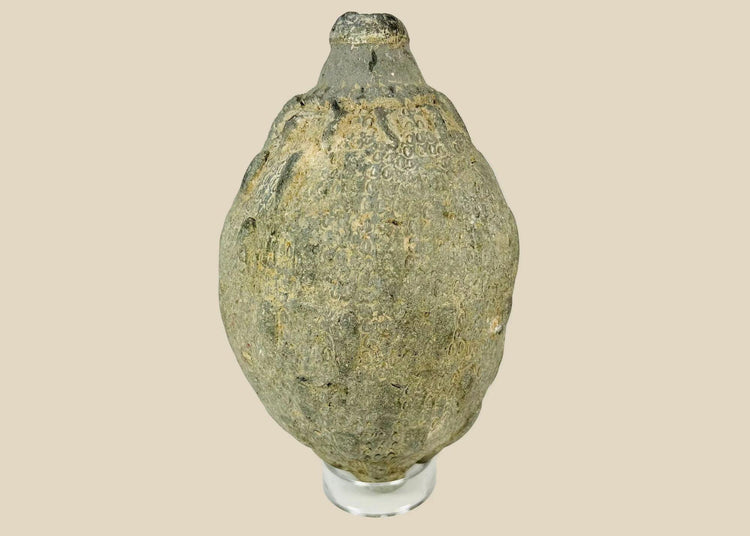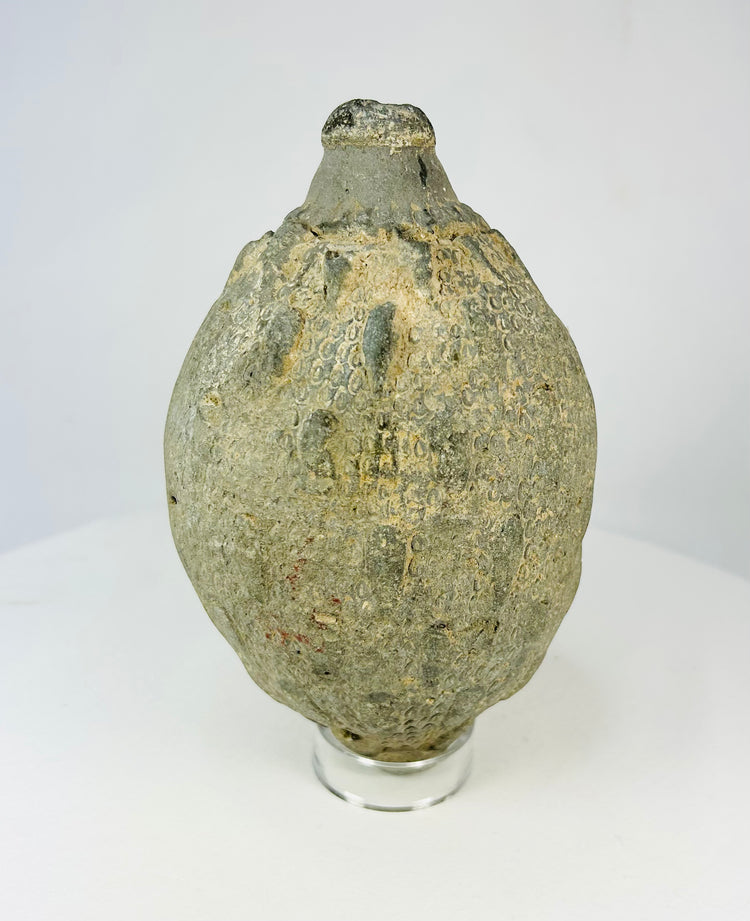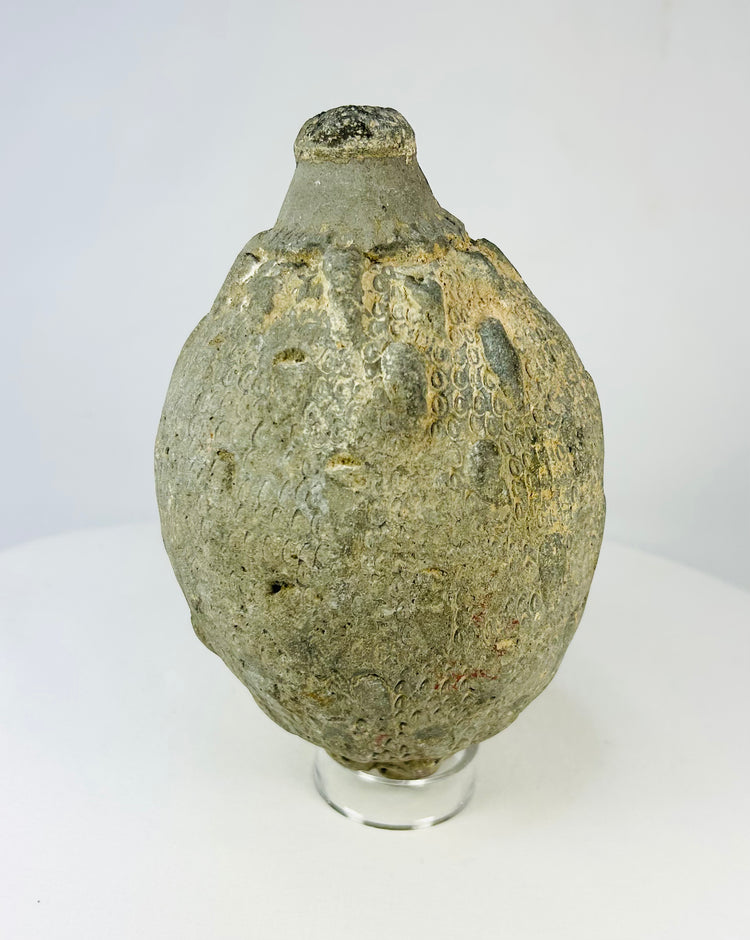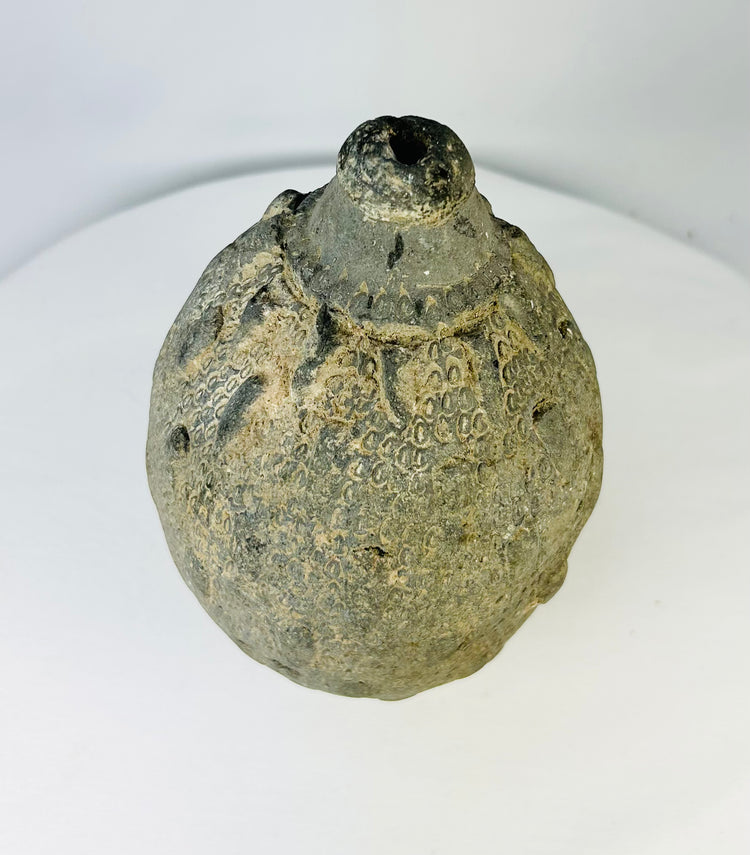Islamique | Grande Perse | Grenade à main en céramique | Xe-XIIe siècle apr. J.-C.
Description
Plus
Moins
Contexte historique et origine
Région : Grande Perse (Iran actuel)
Matériau : céramique non émaillée avec surface texturée
Période : Xe-XIIe siècle de notre ère
Description
Une grenade à main islamique en céramique exceptionnellement rare, datant de l'époque médiévale. Le récipient présente un corps bulbeux se terminant par un col étroit, avec une petite ouverture destinée à être remplie de substances incendiaires comme le naphte. Son extérieur texturé offrait une bonne prise en main au combat. Ces grenades étaient cruciales lors des sièges et des combats navals, témoignant des avancées en ingénierie et en chimie de la technologie militaire islamique aux Xe-XIIe siècles de notre ère.
Caractéristiques
- Corps en céramique bulbeux avec col étroit et petite ouverture
- Surface texturée pour l'adhérence et la manipulation
- Conception d'arme incendiaire fonctionnelle, destinée au remplissage et à l'étanchéité avec des matériaux combustibles
- Représente le développement précoce des engins explosifs portatifs
Importance culturelle et militaire
L'utilisation de grenades en céramique marque une étape importante dans l'innovation militaire médiévale. Les ingénieurs islamiques exploitèrent des incendiaires à base de pétrole pour créer des armes dévastatrices pour le combat rapproché et les sièges. Ces objets soulignent l'ingéniosité technologique du monde islamique et son influence sur l'évolution des pratiques militaires mondiales.
Condition
Bon état archéologique, forme stable et structure intacte. Usure superficielle et patine dues à un âge avancé, avec de légères abrasions et des dépôts de terre. Malgré des siècles d'enfouissement, la grenade conserve son profil distinctif et son design utilitaire.
Dimensions (approximatives)
Hauteur : 7 po
Âge
Xe-XIIe siècle de notre ère, monde islamique, probablement Grande Perse
Description
Contexte historique et origine
Région : Grande Perse (Iran actuel)
Matériau : céramique non émaillée avec surface texturée
Période : Xe-XIIe siècle de notre ère
Description
Une grenade à main islamique en céramique exceptionnellement rare, datant de l'époque médiévale. Le récipient présente un corps bulbeux se terminant par un col étroit, avec une petite ouverture destinée à être remplie de substances incendiaires comme le naphte. Son extérieur texturé offrait une bonne prise en main au combat. Ces grenades étaient cruciales lors des sièges et des combats navals, témoignant des avancées en ingénierie et en chimie de la technologie militaire islamique aux Xe-XIIe siècles de notre ère.
Caractéristiques
- Corps en céramique bulbeux avec col étroit et petite ouverture
- Surface texturée pour l'adhérence et la manipulation
- Conception d'arme incendiaire fonctionnelle, destinée au remplissage et à l'étanchéité avec des matériaux combustibles
- Représente le développement précoce des engins explosifs portatifs
Importance culturelle et militaire
L'utilisation de grenades en céramique marque une étape importante dans l'innovation militaire médiévale. Les ingénieurs islamiques exploitèrent des incendiaires à base de pétrole pour créer des armes dévastatrices pour le combat rapproché et les sièges. Ces objets soulignent l'ingéniosité technologique du monde islamique et son influence sur l'évolution des pratiques militaires mondiales.
Condition
Bon état archéologique, forme stable et structure intacte. Usure superficielle et patine dues à un âge avancé, avec de légères abrasions et des dépôts de terre. Malgré des siècles d'enfouissement, la grenade conserve son profil distinctif et son design utilitaire.
Dimensions (approximatives)
Hauteur : 7 po
Âge
Xe-XIIe siècle de notre ère, monde islamique, probablement Grande Perse
Vous aimerez peut-être aussi




























